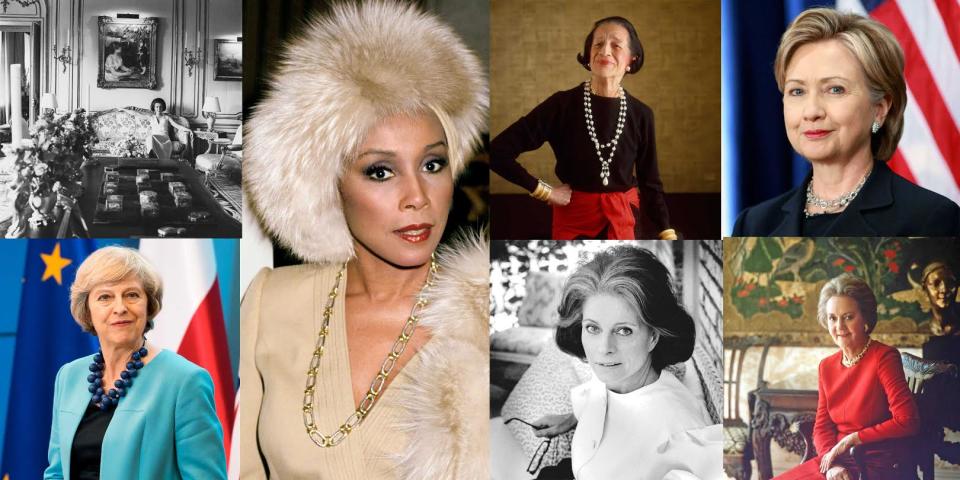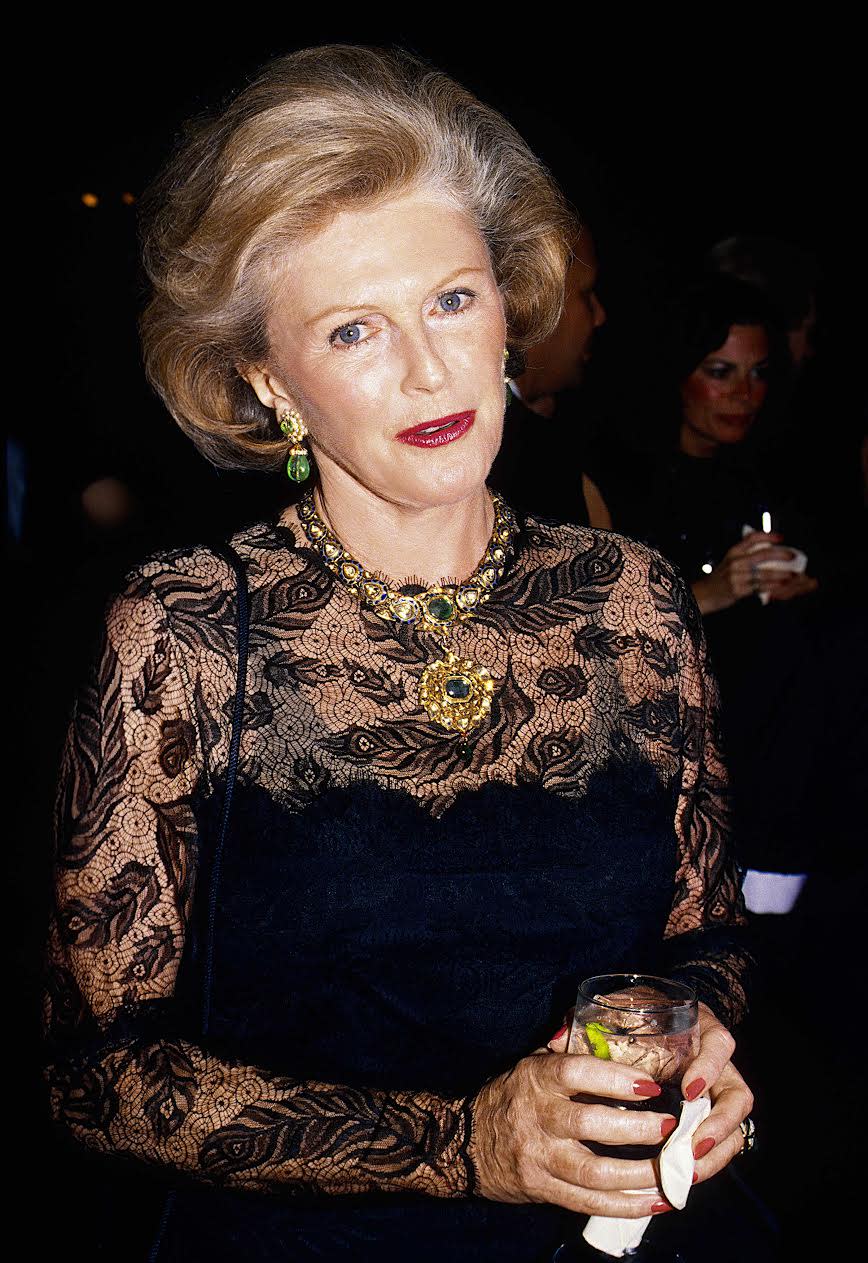The Revival of 'Dangerous Liaisons' and the Evolution of the Grand Dame

I've distilled everything to one single principle," declares the Marquise de Merteuil in Les Liaisons Dangereuses. "Win or die." The villainess-heroine of Pierre Choderlos de Laclos's 1782 novel famously does both, manipulating and seducing her way through one of the most iconic tragedies in the Western canon-and in the process giving us the image of the ultimate grande dame.
When Les Liaisons Dangereuses was published it was a scandalous sensation, relished and gossiped over by Marie-Antoinette and the court of Versailles. Whether a shameless celebration of libertinism or, as later claimed, a denunciation of pre-revolutionary decadence, the novel laid bare the excesses of the ancien régime; never before or since have characters schemed with such Mephistophelian relish, destroying lives and savaging reputations with a calculating froideur that has influenced fiction and theater ever since.
This fall, in one of the most eagerly anticipated Broadway revivals in years, the role of the Marquise-a showcase for actors from Jeanne Moreau to Glenn Close to Annette Bening-will be reprised by Janet McTeer, one of England's greatest living stage performers (though she is largely unknown to American audiences).

While the play's seducer, Valmont (played in the revival by Liev Schreiber, in the role that made a star of John Malkovich), is the archetypal cad, it is the Marquise who provides the story's moral center (or lack thereof ). Gloriously vengeful, wonderfully complex, the Marquise is a challenge to an actor's range, since the portrayer must not fall into camp or panto villainy but bring out the character's vulnerabilities, fears, and desperation.
The Marquise comes from a world where women are thrown away, with no power other than their ability to bear children.
"The Marquise comes from a world where women are thrown away, with no power other than their ability to bear children," says McTeer, who spent the summer in New York warming up for the role by playing Petruchio in an all-female production of The Taming of the Shrew at the Delacorte Theater in Central Park. "Girls are sent to convents at 13 and taken out to marry a man of their parents' choosing. Therein is the source of her vulnerability. She cut herself off from any damaging intimacy and uses the only tools she has: her sexual prowess and her brain."
From that perspective it's an especially interesting moment to mount Les Liaisons Dangereuses, a play that deals explicitly with the question of powerful women in a man's world, at a point when a woman has become the prime minister of Great Britain and, for the first time in history, the presidential candidate of a major U.S. political party. The archetypal grande dame-mature, larger-than-life, and, crucially, self-made-cultivates power consciously and uses it, operating without the constraints on a younger woman. As a result, giddiness and apprehension have always marked her arrival on the main stage, whether personified by Hillary Clinton, Eleanor Roosevelt, Catherine the Great, or Lady Macbeth.
Yet girls are no longer sent to convents or forced to rely for influence on their ability to bear children. The grande dame, a figure of undisguised power, was invented in a world of rigid power structures that have since become fluid or no longer exist. Indeed, one of her hallmarks is a cultivated stateliness that often doesn't mesh with modernity-leaving us with the question: Has the grande dame ascended to the throne just as she ceased to be relevant?
Indeed, many women who might have once aspired to or claimed the title of grande dame view the term warily. Arielle Tepper Madover, the chair of the Public Theater and the Tony-winning producer of such plays as The Cripple of Inishmaan (starring Daniel Radcliffe) and the upcoming Les Liaisons Dangereuses, isn't one.
The grande dame, a figure of undisguised power, was invented in a world of rigid power structures that have since become fluid or no longer exist.
"Things are different now, but I like to think that the term still conjures intelligence and strength," says Tepper Madover, 43, one of Broadway's youngest powerhouses. "People always referred to my grandmother [philanthropist and collector Janice Levin] as a grande dame, so I always understood it as a compliment-someone who was admired and respected, someone to learn from."
One salient difference, of course, is the age we live in. The grande dame came into her own with the Enlightenment, a woman freed from the restrictions of an older world and given, if not power, a chance for influence. This was the era of the salon, when ambitious women like the Marquise de Rambouillet and Madeleine de Scudéry played host to philosophers and poets, their homes hubs of thought and art. Salons also proliferated in Belle Epoque Paris and turn-of-the-20th-century England, with the salonnières frequently fighting over the company of figures like Anatole France and Claude Debussy. This was not mere social one-upmanship; grandes dames could yield real influence through these connections. Indeed, it was one of the few ways women could do so.

This may be why the term grande dame (which came into use in the mid–18th century) "feels creaky," says Josie Rourke, the director of Les Liaisons Dangereuses. "It seems to be applied to older women and is a sort-of status that a woman can tip into without attaining real power. It seems to be about presence rather than power, influence rather than command. I wonder if it's inhibiting. On balance, I'd rather be a femme fatale."
The grande dame seems to have morphed at some point from an actively sinister figure into something more benign: a woman whose power and influence were benevolent forces. "Complexity" was no longer synonymous with a tortured villainy; intelligence didn't have to have a dark side. "First, they're never boring, never forgettable. And second, while they don't shout, they have a lot of spice in them (they're usually not PC.) And of course they have a complexity that comes with age," says Kathryn Walt Hall, a second-generation Napa Valley winemaker, former US ambassador to Austria, and author of A Perfect Score: The Art, Soul, and Business of a 21st-Century Winery.
Sometimes you need a strong wife to make you relevant-and, frankly, for her that's a job.
The grande dame, says Marjorie Gubelmann, the founder and CEO of Vie Luxe (she is also known as DJ Mad Marj), was often defined by her marriage-and vice versa: "Sometimes you need a strong wife to make you relevant-and, frankly, for her that's a job." Gubelmann recalls her grandmother Barton, a society figure in Newport and Palm Beach, as a classic grande dame, someone who ate breakfast in bed on a tray, at which point "six lines on the phone would start ringing" and the social calendar would begin filling up.
"There should be a lot of socializing, but while a grande dame should be fun, she's never pretentious," Gubelmann emphasizes. "Lynn Wyatt; Gloria, Princess of Thurn and Taxis-these are the only grandes dames left. Lynn Wyatt is fun. And like a lot of these women, my grandmother did not take herself seriously. She served canned peas at dinner parties and walked around in a T-shirt. Or a Scaasi dress. She definitely did not do yoga."
By the 1930s the grande dame was already becoming an archetype-the stock character duchess harrumphing through Agatha Christie mysteries and screwball comedies, clinging to a bygone era. Some of these portrayals were nostalgic and fond- think of the antics of larger-than-life Auntie Mame (currently being revived as a feature film starring Tilda Swinton and written by Bridesmaids screenwriter Annie Mumolo)-but often they were scornful or scathing. is culminated in such midcentury grotesques as Norma Desmond and Baby Jane, women unable to reconcile themselves to their lost sway in a changing world.
By the 20th century, women had other means of acquiring power. The social order did not need to be influenced and manipulated behind the scenes; it could be run.
Because by the 20th century, women had other means of acquiring power. While a few influential salons still existed in Paris and New York, and patronesses like Peggy Guggenheim would exert influence late into life, increasingly women were being given the opportunity to operate in worlds-politics, criticism, public a airs-previously denied them. One did not need to be a patroness; one could be a thinker. The social order did not need to be influenced and manipulated behind the scenes; it could be run.
Moreover, the world increasingly worshiped youth. Age no longer connoted experience or power; frequently it meant the opposite. Some tried on the grande dame trappings-say, Barbara Cartland-and immediately passed into camp. A very few of the great later grades dames managed to exist into the modern world. Diana Vreeland, for instance, wielded the grande dame's classic weapons-mystique, experience, hauteur, social standing, taste-in one of the few remaining bastions of strict hierarchy: fashion. As a holdover, she made herself chic, iconic.
Today the grande dame is a rare and special breed. For the most part, ours is a world without much mystique; even the biggest celebrities trade, however disingenuously, on relatability, normality, and constant presence in our lives. We may toss around the term grande dame, often to describe anyone old who has been in her profession a long time. But it doesn't hold the power it once did.

In one sense, of course, that evolution is natural and to be desired. We don't need the same kind of "great ladies" in a world where we have, simply, great people. The erosion of the social architecture that propped her up is inevitable. And not everyone likes the term's associations. the philanthropist and activist Irena Medavoy says, "The Liaisons Dangereuses grande dame is not something I would want to be connected with. It has a negative connotation. True grandes dames are spectacular women who raise other women up, not tear them down."
Others are more sanguine. "When I think of a grande dame I think of someone totally fabulous, eccentric, a great hostess, a patron of the arts, women like Betsy Bloomingdale or Connie Wald," says the filmmaker and writer Liz Goldwyn. "They're starring in the movie, and we're all just featured players." Does she aspire to be one? "Maybe when I'm 80. I mean, Misia Sert-who wouldn't want to be the patron of Diaghilev? I want to be a Marchesa Casati grande dame. We need more of them. The world has gotten too boring."
Maybe now is the moment to rehabilitate this icon, to place her in context and give her the respect she deserves-and, ultimately, redefine her. At her best she was fierce, and smart, and important to those who orbited around her. She was not simply a straight man or a foil; she ran the show. When Janet McTeer brings the Marquise de Merteuil to life, she will be a character who wields her power ruthlessly and is punished for it. She is an iconic character, but more than that she is a complex woman. Says McTeer, "The marquise is damaged, evil, and seductive... What's not to love?"
This article originally appeared in the October 2016 issue of Town & Country.
You Might Also Like

